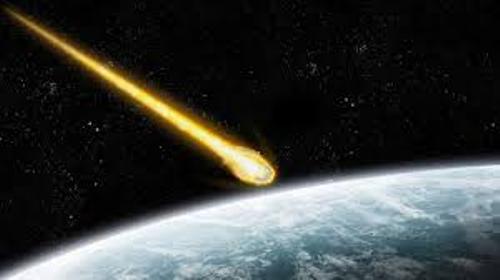
They come from the crust or mantle of a large asteroid and have probably been crystallised from magma. These are contained in a finely crystallised matrix containing a little iron, sometimes whitish refractory inclusions rich in calcium and aluminium, and in the case of carbonate chondrites, a high proportion of water and carbon. They owe their name to the presence of chondrules, small spherules from 0.1 to 10 mm in diameter that are not found in terrestrial rocks, and are mainly composed of silicate minerals such as olivine and pyroxene. Chondrites are primitive meteorites that have remained virtually unchanged since the formation of the solar system 4.566 billion years ago.Rocky meteorites, by far the commonest, are themselves divided into two main groups: chondrites and achondrites. There are rocky ones, metallic ones and intermediate ones that are called mixed.Īccording to the interpretation accepted today, these differences in mineralogical composition reflect different conditions in the formation and evolution of bodies in the solar system.Ĭredits: Stephane Erard and Aurélie Le Bras (). There is a wide variety of meteorites and to sort these out, they have been classified into three main categories. The mass of meteorites falling to Earth per year is estimated at 10 000 tonnes. It is thought that a huge meteorite (several kilometres in diameter) was responsible for the disappearance of the dinosaurs 65 million years ago. This meteorite shows a high diversity of organics, in that if somebody was interested in studying organics, this is not normally the type of meteorite that they would ask to look at, but because there was so much excitement surrounding it, everybody wanted to apply their own technique to it, so we have an unusually comprehensive set of data for a single meteorite.Įvery year, we provide hundreds of meteorite specimens to scientists all over the world to for study, this is a first for us: sending one of our samples back home for the benefit of science.īut we also keep looking out for new meteorite falls, every meteorite that falls to Earth is worth studying, as it may provide a unique perspective onto the solar system and may shed new light on its history and our origins.A rocky body of extra-terrestrial origin that has survived the passage through the atmosphere (see shooting star) and therefore falls to earth. It made such a loud noise like a meteorite crashing down. When the meteorite arrived at the Field, I spent the entire weekend analyzing it, because I was so excited to find out what kind of meteorite it was and what was in it, with every meteorite that falls, there's a chance that there's something completely new and totally unexpected. Meteorites smaller than 2mm are classified as micrometeorites. Modern classification schemes divide meteorites into groups according to their structure, chemical and isotopic composition and mineralogy. Meteorites have traditionally been divided into three broad categories: stony meteorites are rocks, mainly composed of silicate minerals iron meteorites are largely composed of metallic iron-nickel and, stony-iron meteorites contain large amounts of both metallic and rocky material. In contrast, there are more than 38,660 well-documented meteorite finds. As of February 2010, there are approximately 1,086 witnessed falls having specimens in the world's collections.

Meteorites that are recovered after being observed as they transited the atmosphere or impacted the Earth are called falls. Meteorites have been found on the Moon and Mars. More generally, a meteorite on the surface of any celestial body is a natural object that has come from elsewhere in space. The term bolide refers to either an extraterrestrial body that collides with the Earth, or to an exceptionally bright, fireball-like meteor regardless of whether it ultimately impacts the surface.

When a meteoroid enters the atmosphere, frictional, pressure, and chemical interactions with the atmospheric gases cause the body to heat up and emit light, thus forming a fireball, also known as a meteor or shooting/falling star.

A meteorite's size can range from small to extremely large. Freebase (0.00 / 0 votes) Rate this definition:Ī meteorite is a meteoroid originating in outer space that survives impact with the Earth's surface.


 0 kommentar(er)
0 kommentar(er)
